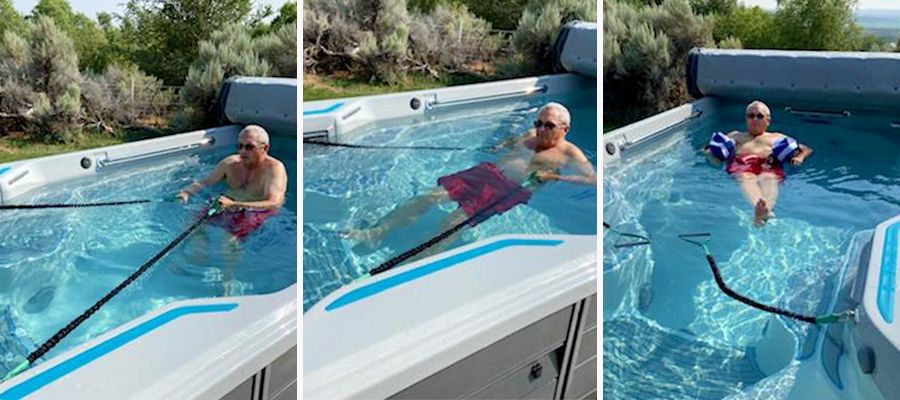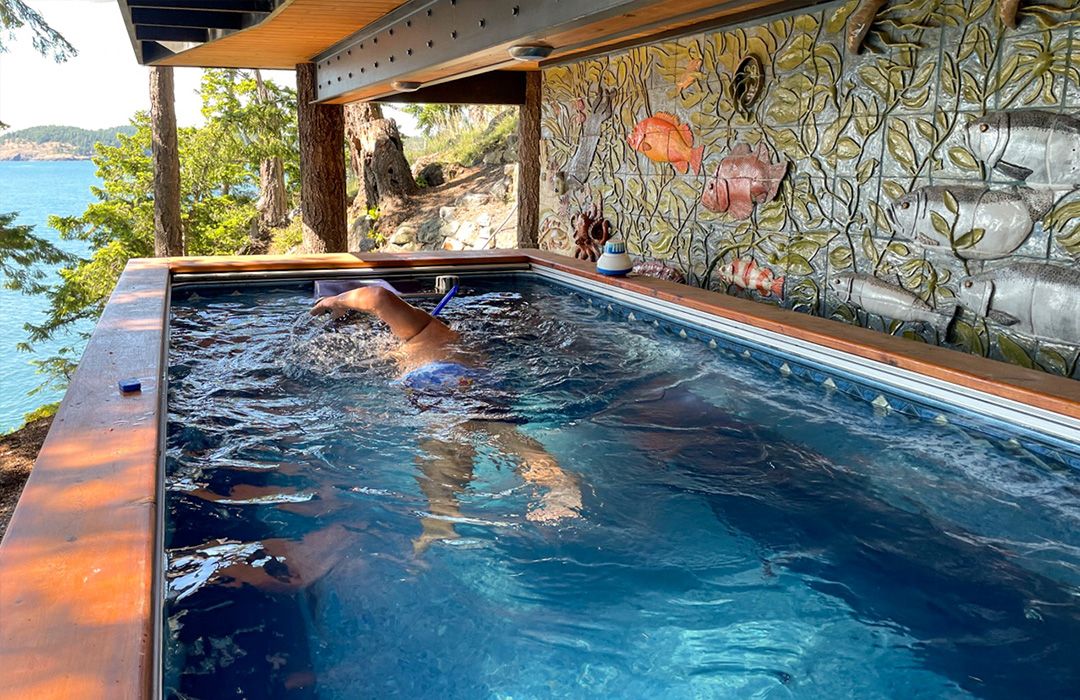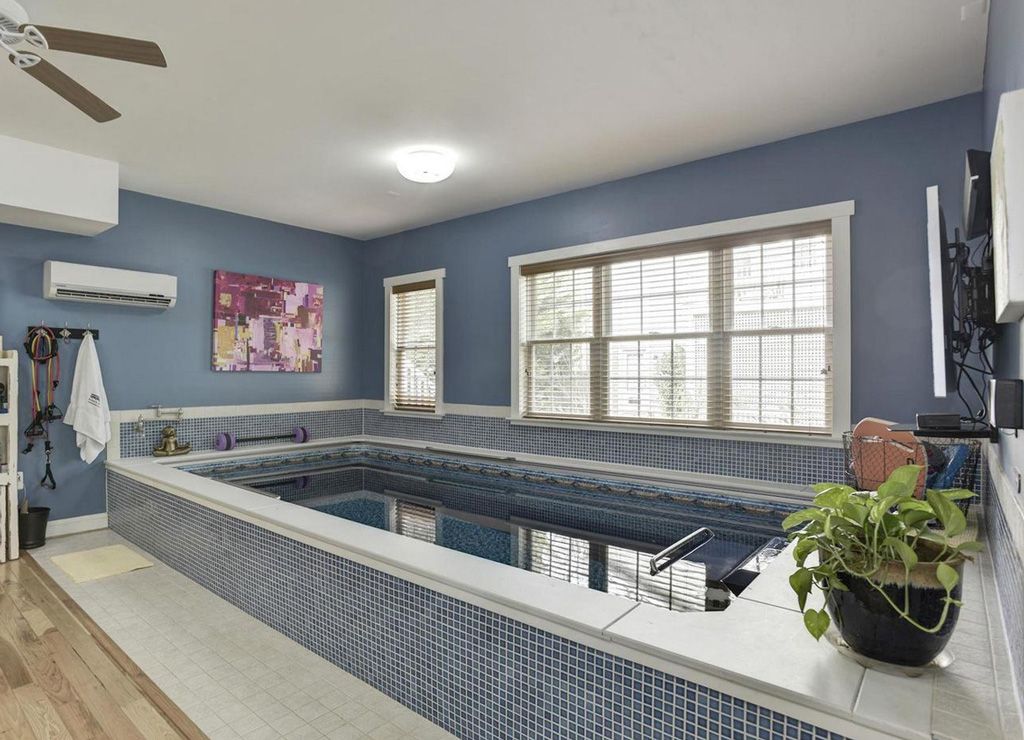Best Therapy Pool Exercises
Why pools are great tools for therapy, and which exercises are the best to do!
Pools are usually used for fun and fitness. You may not know that they also help with recovery and rehab. A pool’s benefits to your health are so much more than burning calories by swimming. When it comes to physical therapy, relaxation, or rehabilitation from an injury, a pool is a fantastic choice.
A solid body of research shows that therapy exercises, when performed in a pool, can be even more effective than doing them on land; the water provides a soothing environment to put both your mind and body at ease.
Maybe you were recommended aquatic therapy by a medical professional, or maybe you’ve simply taken an interest in it all on your own. Whatever the case may be, there are countless ways to benefit from this time-tested practice.
WHAT IS AQUATIC THERAPY?
Aquatic therapy is not the same as aquatic fitness, because it functions essentially as medicine or rehab rather than just a simple exercise. According to the GreenFields Continuing Care Community, it requires a professional present and is often covered by insurance, such as in cases where aquatic therapy is recommended after sustaining an injury.
Whether it’s with your doctor or your aquatic therapist, you’ll be able to develop a routine of therapy pool exercises specific to your needs.

Therapy pool exercises have been used in the U.S. since the early 1900s, according to RPI Therapy Services. Its first recorded use was by Dr. Charles Leroy Lowman to treat a patient with cerebral palsy in 1911, though physical therapists were not added to the Social Security Act until 1967.
Aquatic therapy has only continued to grow in popularity and practice over the years. It’s proven to help improve flexibility, muscle strength, coordination, movement, balance, and more. In addition to all the physical health benefits, it can also reduce stress and improve overall quality of life.
WHAT ARE THE BENEFITS?
There are other methods of physical therapy that can also provide your desired effects, of course, but therapy pool exercises have many exclusive benefits you won’t find anywhere else.
For example, the decrease in gravity and increase in resistance underwater allow your joints more motion; when movement is too painful on dry land, you may be able to start therapy exercises earlier in the pool for faster outcomes.

Therapy pool exercises ensure that you’ll build up your muscle strength faster both in your limbs and your lungs. It can also help you develop your balance.
In addition, warm water can also provide pain relief for muscles and joints, which means a more comfortable environment for physical therapy. Even just sitting in warm water can be beneficial to you, through relieving stress on your body and your mind, as well as improving circulation.
Some examples of illnesses for which aquatic therapy can provide symptom relief are arthritis, scoliosis, tendonitis, chronic pain, stress relief, as well as orthopedic and brain injuries. There are many more reasons that your doctor may recommend aquatic therapy, however, and it might be something you want to try all on your own!
WHAT ARE THE BEST EXERCISES?
Set yourself up with some water shoes or a flotation device, if you want one, and try some therapy pool exercises, if you have medical approval to do so! It’s important, though, to remember to go slow, stay hydrated, and don’t push through your pain, however small.

Some of the best therapy pool exercises to do underwater are ones that you do on land; there are more options than just swimming!
Try walking or jogging around the pool, doing lunges, knee lifts, and even pull ups on the edge of the pool— lifting your body out of the water and then slowly lowering yourself back down.
If you have a pool noodle, you can use it as support for your arms while you plank or move your legs in a bicycle motion. If not, try standing on one leg in the pool. Both activities involve balancing and endurance, and you’re at an advantage to develop either of those skills if you’re in a pool!
There are many other aquatic therapy methods, but these are some of the most common. However, you should consult your physician or physical therapist for the exercises that are suitable for your specific needs.
OUR THERAPY POOLS
If you’re considering the health benefits of therapy pool exercises, you may also be considering a pool specific to aquatic therapy. These exercises can be performed in any pool, though warm, chest high water is typically the norm.
If you’re not too fond of the pool noodle method, Endless Pools offers our Aquabike and our exclusive Underwater Treadmill to make your aquatic therapy experience that much easier, engaging, and effective.
And if you’re looking to buy a pool specifically for this purpose, the WaterWell® pool is one in particular that’s been used for aquatic therapy. Or explore our swimming pools and swim spas for an adjustable current that can also offer even more resistance than water typically allows; exercising with the Endless Pools current can promote further endurance and strength.

Regardless of what pool you’re performing aquatic therapy in, a home therapy pool will give you convenient access to a comfortable, research-based exercise routine.






